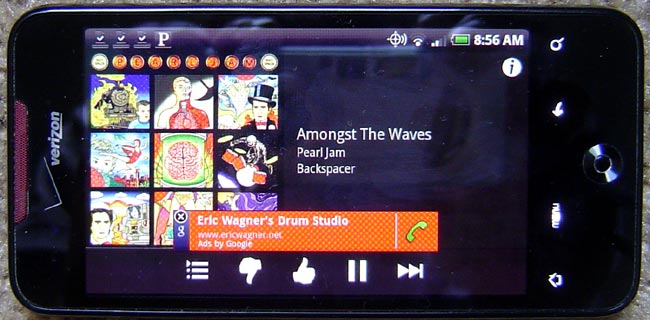I finally broke down and purchased a smartphone. Instead of the ubiquitous iPhone however, I opted for a HTC Incredible Android phone. Not that I have any distaste for Apple, Inc. Rather, it is more because of the lack of ATT coverage in areas where I travel and the new data plans from ATT.
The phone is great, I enjoy the functions, the GPS navigation tool, Gmail, news, and all the other apps. It fills many roles while I am out gallivanting around earning a living.

I have tried Pandora in the past on my computer. I found it to be okay, not great. I guess my main issue was it seemed a little boring just listening to music. It was good music, and when I interacted with the programming, voting a song up or down, the music selections got better. But it was distracting to interact while I was trying to work on the computer and in the end, I turned the volume down and it became background noise.
In the car, I figured, things would be different. I could listen to Pandora the same way I listened to my car radio. Lots of music would be great and not distracting at all.
Except… I found it to be… boring. The music was great but the whole thing lacks personality. I suppose we are blessed around here with several radio stations that play new music. With Pandora, there was almost no new music, even if I created a new music radio station. Further, it seemed like something was missing: human interaction. I enjoy hearing the deeeejay talking about some band factoid or some such. Just listening to music endlessly left me wanting something more. Perhaps that is just me.
Whilst on the road to various places, I like to listen to WEQX in Manchester, VT; WDST, Woodstock, NY; WKZE, Salisbury, CT; WXPK, White Plains, NY. All of those stations have personalities and play great music. They also stream audio, which means I can listen to them on my phone.
So Pandora gets a meh, and the phone gets a thumbs up.

